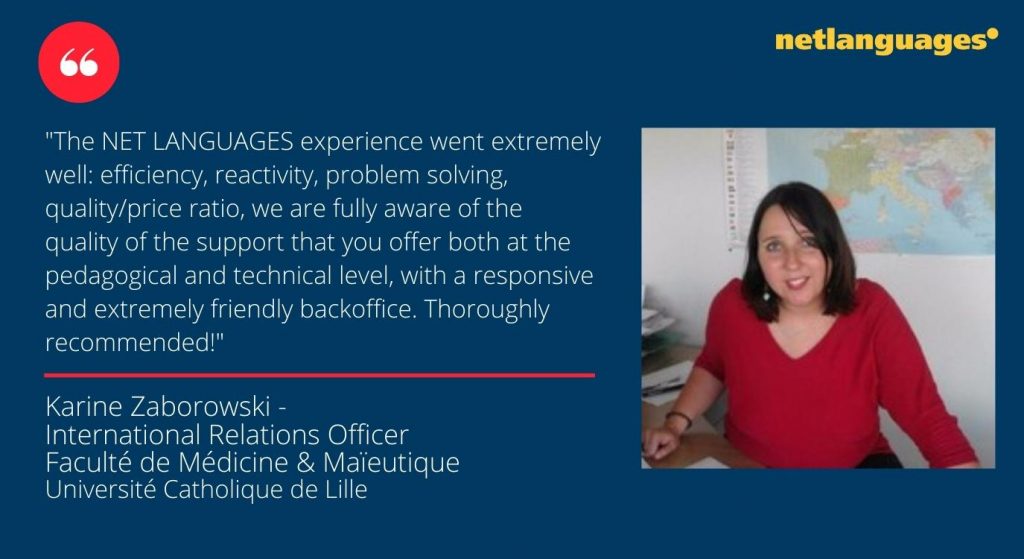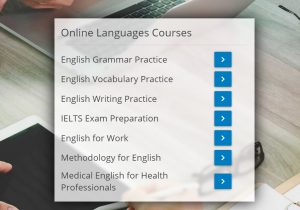Demand for online courses and materials is high in universities as we saw in our blog post: online learning trends for universities. So how do universities source online courses and materials?
Some universities have created their own online course content, some outsource it, and others do both.
We specialise in collaborating with universities so we thought we would share some of the ways we cater for university requirements:
Scenario 1 – An integral component of course studies
Imagine if you will, universities that need an online course to become an integral part of their students’ English studies. Students will probably also attend lectures but in addition they are required to complete a structured online English course as part of their studies. The results of the progress on this course will contribute to their final grading. So, one model is to provide the university’s students with access to one or two levels of the General English online course series which will give them extensive practice in the four skills: reading, listening, writing and speaking in addition to vocabulary, grammar, functional language, pronunciation features etc. The integrated testing model provides proof of learning as the student progresses through the online course material and provides both global and specific language area scores.

Scenario 2 – A blended approach to language training
 Other universities implement a more integrated approach. They need online course material to combine with online group classes which are taught by their English language teachers. The teachers introduce and prepare the students for the online work for the week in a virtual group class, the students complete the work during the week, and in the next class the teachers extend the online practice and prepare the students for the following week’s work.
Other universities implement a more integrated approach. They need online course material to combine with online group classes which are taught by their English language teachers. The teachers introduce and prepare the students for the online work for the week in a virtual group class, the students complete the work during the week, and in the next class the teachers extend the online practice and prepare the students for the following week’s work.
To support the teachers, we provide comprehensive lesson plans for use in the online group classes.
This blended approach provides essential support and motivation for the students in the online component of the course, and we have found this to be a highly effective and successful language learning course model.
Scenario 3 – Online language resources for university students
 A different scenario is that of university libraries or resource centres. One example is a consortium of university libraries which license a wide selection of online language resources to support students via their online university libraries. Each university library selects the online course material most relevant to their students’ needs and using a concurrent user access model, the university libraries provide affordable access to all authorised users via the library portals.
A different scenario is that of university libraries or resource centres. One example is a consortium of university libraries which license a wide selection of online language resources to support students via their online university libraries. Each university library selects the online course material most relevant to their students’ needs and using a concurrent user access model, the university libraries provide affordable access to all authorised users via the library portals.
Some of the most popular resources include our IELTS Preparation courses, Business English modules, the 8-level General English course and the 5-level General Spanish course.
Scenario 4 – Online language courses for professional development / In-service training
 Of course, universities can’t run well without a dedicated and motivated staff to run them. Another very popular model is catering for the training requirements of the university’s invaluable administrative and services staff. The professional development requirements range from improving the staff’s general overall level of English to specific work-related requirements e.g., giving a presentation in English, attending and participating in meetings in English etc.
Of course, universities can’t run well without a dedicated and motivated staff to run them. Another very popular model is catering for the training requirements of the university’s invaluable administrative and services staff. The professional development requirements range from improving the staff’s general overall level of English to specific work-related requirements e.g., giving a presentation in English, attending and participating in meetings in English etc.
We provide flexible and tailored online training packages which include access to self-paced online courses combined with one-to-one tutorials or online group classes contextualising the language practised to specific work-related contexts and requirements.
Do you work for a university? What online learning trends for universities do you identify with? Do you fit into one of the above scenarios or do you have different language learning requirements?
Contact us and let’s see how we can help you.

